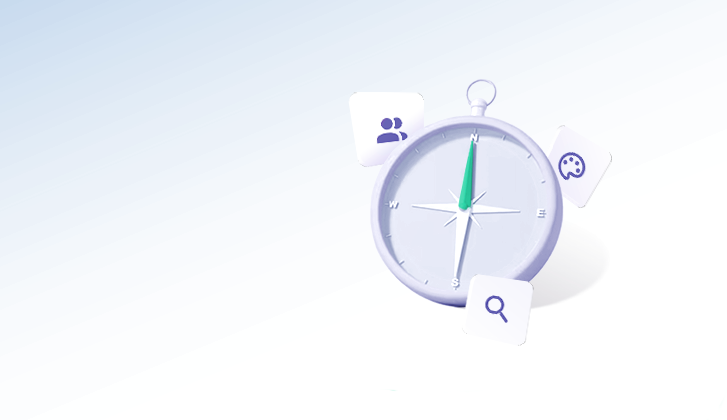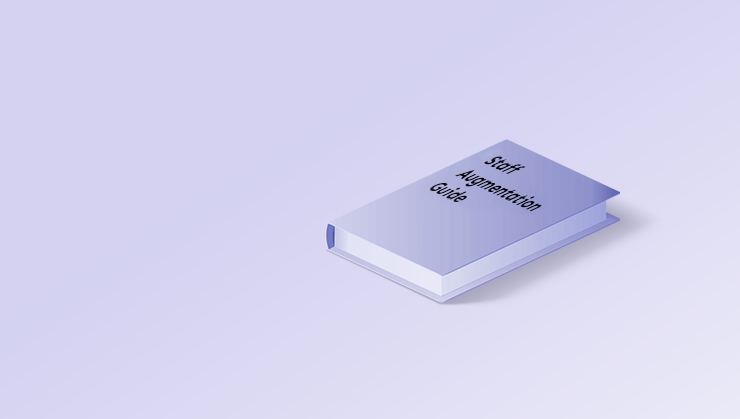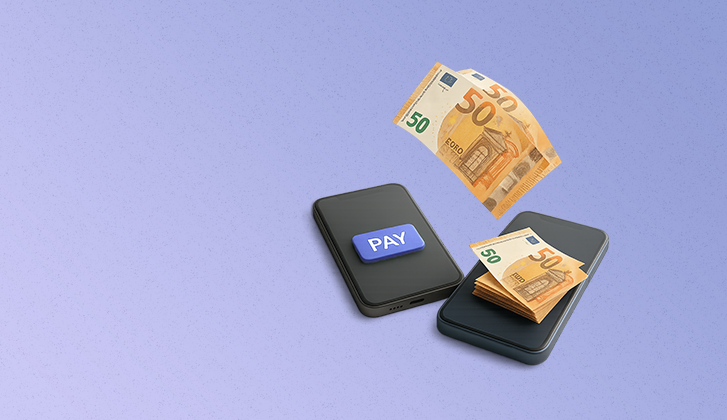The Discovery Phase in Software Projects
96% of software projects fail in some way or altogether.
A report by the Standish Group found that 47% of projects experience delays, cost overruns or missing critical features.
Almost half, 49%, failed because users didn't like the app or the client pulled the plug early.
So what goes wrong?
The answer often lies in the very early stages of the project - the discovery phase. This is a crucial time for idea validation, proper planning and risk mitigation.
The discovery phase sets the tone for the entire project. Yet, it is a phase that is often overlooked or not given the attention it deserves.
Table of Contents
- What is the ‘Discovery Phase’?
- Discovery Phase Benefits and Importance
- Discovery Phase Deliverables
- How we conduct discovery at All Front: Step-by-Step
- Discovery Phase Checklist
- On a final note
What is the ‘Discovery Phase’?
The discovery phase is the initial step of laying the groundwork for any project. Before starting any project, it is important to do a lot of research and brainstorming. This helps clarify the project's requirements, goals, roadmap, and scope.
The main objectives of the discovery phase are:
- To define project goals and deliverables
- To identify key challenges, constraints and risks
- To outline project scope and requirements
- To plan a clear roadmap
- To build alignment and consensus among stakeholders
Who is involved in the discovery phase?

A successful discovery phase requires active involvement and collaboration among all stakeholders. Who takes part may vary from project to project, but generally, these are:
- Client: The client is the one who initiates the project. During the discovery phase, their role is to communicate their goals, expectations and business needs. This is key to shaping the project’s direction.
- End user: The end user, or the people who will be using the product, are at the forefront of the discovery phase. Their input is essential for understanding user needs, preferences, and pain points. By gathering user feedback early on, you can make sure the final product delivers a positive user experience. In some cases, the client and end user might be the same person.
- Project Manager: The project manager makes sure all research, analysis, and planning are carried out. The project manager works with everyone involved to understand their needs and goals for the project. They manage expectations and set realistic goals.
- Product Owner: The product owner collaborates with the project manager and other stakeholders to shape the product vision. With their market knowledge and business understanding, their role is to identify goals and set priorities. The product owner helps connect the client, end users, and development team, ensuring the project stays on track.
- UX/UI Designer: UX/UI designers bring a user-centric perspective to the discovery phase. They collaborate with the rest of the team to uncover and understand user needs, pains and behaviours. UX/UI designers will conduct user research, and create personas, wireframes and/or prototypes. Their role is to make sure the product is easy to use, smooth and intuitive.
- Software Architect: The software architect handles the system architecture of the product. They assess the current systems and technology to find limitations and opportunities. They will also find the right balance between taking on technical debt and building the product quickly. The software architect will ensure the project is scalable, easy to maintain and follows good practices.
Common misconceptions and challenges
Where do things usually go wrong? Common misconceptions and challenges can make the discovery phase less effective.
- Rushing through it
The discovery phase is important for project success, not just a box-ticking exercise. Neglecting or rushing through it can lead to misunderstandings, delays, and costly revisions later on. Keep in mind that when software providers offer a "free quote," they often skip this phase.
- Not involving stakeholders enough
Lack of active participation from key stakeholders can hinder the discovery phase's effectiveness. It's important for everyone involved to take part in the discovery phase. This helps gather different viewpoints and align expectations.
- Overlooking user research and validation
If you skip research and validation, you might end up building something that doesn't resonate with your users. After all, how can you build a successful product if you don’t know who you’re building it for?
Discovery Phase Benefits and Importance

Once more for the people in the back: the discovery phase isn’t a formality. It’s a critical step in product development that shouldn’t be ignored. Let’s look at the key benefits of conducting a thorough discovery phase and why it matters:
- A clear understanding of requirements
During the discovery phase, your team gains a deep understanding of project requirements. This foundation ensures that the final product aligns with user needs and business objectives.
- User-centric decision-making
The discovery phase puts the user at the forefront. It encourages you to get to know your users, their needs, pains and behaviour before building your product. You will conduct in-depth research, interviews, surveys and usability testing. As a result, you will collect valuable insights that will drive your decision-making.
- More accurate estimates
The discovery phase takes the “guesswork” out of estimates. It allows estimates to go from “gut feeling” to work which is broken down into an intricate level of detail. This allows you to make well-informed decisions.
- Better team synergy
The discovery phase encourages active involvement and engagement of all relevant stakeholders. This in turn promotes collaboration within the team. Everyone understands the project's vision, goals, and how their tasks contribute to its success.
- Value-driven development
By conducting market and competitor research, you can understand what works better for your product. This way you can prioritise must-have features that provide the most value. This keeps the team focused on addressing key pain points first before adding nice-to-haves.
- Empowering non-technical founders
Many non-technical founders struggle to explain their software needs to developers. The discovery phase helps non-technical founders work better with the development team. It ensures their vision is accurately translated into the final product.
Why is the discovery phase important for every project?
The side effects of skipping the discovery phase can be difficult to recover from.
- Scope creep
Scope creep happens when project requirements and features keep growing uncontrollably. The Project Management Institute found that 52% of projects experience scope creep. This often leads to project failure. Prioritising tasks during the discovery phase can prevent scope creep from happening.
- Increased costs
Blurred scope leads to higher incurred costs. As the project progresses, unexpected challenges can lead to the project going over budget. When developers break tasks into smaller parts, they force themselves to think about the problems they may face. This can help reduce budget overruns.
- Missed deadlines
Neglecting the discovery phase means neglecting to uncover any roadblocks that can delay the project. This may result in missed deadlines that can jeopardise the schedule and launch date. The discovery phase helps you account for and mitigate risks by identifying constraints early.
- Poor quality
The discovery phase lays the groundwork for building a high-quality product. If you start developing without evaluating requirements and risks, you may make bad design choices. These choices can have usability issues and functionality gaps. Fixing these later on can cost a lot of time and money.
- Poor product-market fit
40% of startups fail because there is no demand in the market. Whether you’re building an MVP or improving an already existing product, the discovery phase is when validation takes place. Without it, you may invest a lot of time, effort and finances into a project that may need a strategic shift from day one.
Discovery Phase Deliverables
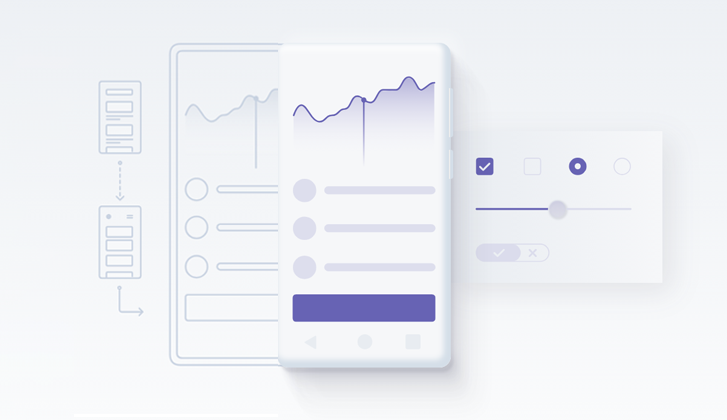
1. Project Scope and Roadmap
A clear project scope outlines what is included and excluded from the project. It establishes expectations and boundaries for everyone. You also get a preliminary timeline with key milestones, deliverables and estimated durations for each task.
2. User Personas and User Stories
User personas represent different types of users. They capture specific characteristics, goals, behaviours, and preferences. User stories are narratives that describe how users interact with the product and what value they get from it. Both personas and user stories can help you better understand the target audience.
3. Technical Assessment
During the discovery phase, you also get to investigate technical limits and possibilities. This may include assessing current systems, compatibility and scalability. Based on this, you can choose the most suitable tech stack for your project, off-the-shelf solutions and third-party tools.
4. Time and Cost Estimates
After the technical assessment, you will get a better picture of the resources required for development and server costs. You can better estimate the time, effort and cost required to complete the project.
5. Wireframes and Mockups
The discovery phase involves creating initial design concepts, wireframes and mockups. These provide a visual representation of the product, its functionality and user experience. In some cases, interactive prototypes can also be created for testing and fundraising.
How we conduct discovery at All Front: Step-by-Step
Step 1: Idea Exploration
At All Front, we kick off discovery by talking to the client about their problem and business model. We also go through any materials the client might have such as basic sketches, diagrams or documentation. If we’re starting from scratch, we will hold workshops to understand the client’s vision.
Step 2: Market Research
Once we have a full understanding of the requirements, we will study the competition, market trends and industry standards. This will help us uncover unique opportunities and key differentiators. We will also gain a better understanding of your target audience.
Step 3: Ideation & Experimentation
During this step, we start shaping the idea into an actionable project. We will create the first design concepts using low-fidelity wireframes. These wireframes visualise the general structure, layout, features, and flow.
We will also create scenarios and use cases. We go through them with the client for feedback and improvement. As we gain a deeper understanding of what works and what doesn’t we iterate and improve the design.
Step 4: Optimising
After the client reviews and approves the final wireframes, we will create the remaining screens. Then, we polish the design by adding cosmetic touches like colour palettes, fonts, and branding.
We provide a few UI and design options for the client to choose from before implementing the final version.
Step 5: Product Roadmap
We map out the project plan, which we organise and split into actionable tasks. This will provide a clear roadmap for any development team to start working on implementing the product.
Our goal is to turn your business idea into a working digital product. We'll provide you with everything you need to start building it, even if we don't continue working together after the discovery phase.
Discovery Phase Checklist
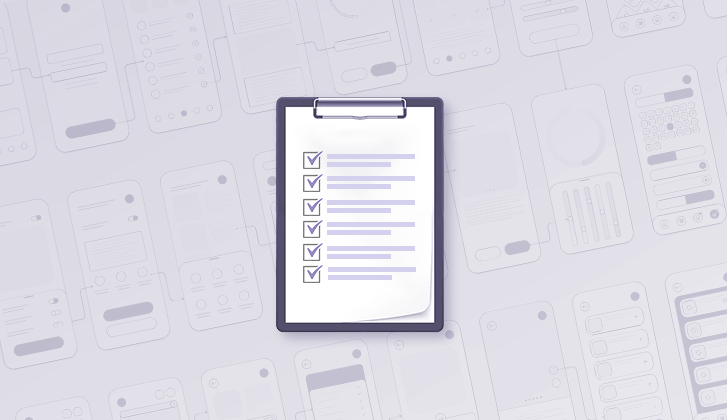
✅ Outline project goals
- What problem are you trying to solve?
- Who are your target customers?
- What is the business model?
✅ Research the market
- What are other similar solutions on the market?
- What are their strengths and weaknesses?
- How is your product different? What is the unique value proposition?
✅ Create personas and use cases
- Develop fictional characters that represent your users
- Define their characteristics, goals, motivations, pains
- Put your personas in different scenarios: How would different users respond and act in response to a given context and features?
✅ Define technical requirements
- Collaborate with developers to choose the most suitable tech stack and integrations
- Identify technical constraints and opportunities
✅ Estimate deadlines and budget
- Break down the development process into smaller tasks and estimate the time needed for each
- Consider the availability and skills of your team or external resources
✅ Develop the design concept
- Create rough sketches or low-fidelity wireframes of your product's key screens and features
- Use a prototyping tool or even just pen and paper to visualise user flows and interactions
- Share these with stakeholders, gather feedback and improve the designs
On a final note
Software projects without a strong foundation are more likely to face problems later down the road. By conducting a discovery phase, you can mitigate some of these risks and prevent costly mistakes.
But it doesn’t have to be a complicated process. Here at All Front, we’ve set up a straightforward and effective process for conducting a project discovery phase. We will address your business needs and help you build a user-centric product.
Got an idea brewing? We'd love to hear it. Let's chat!


